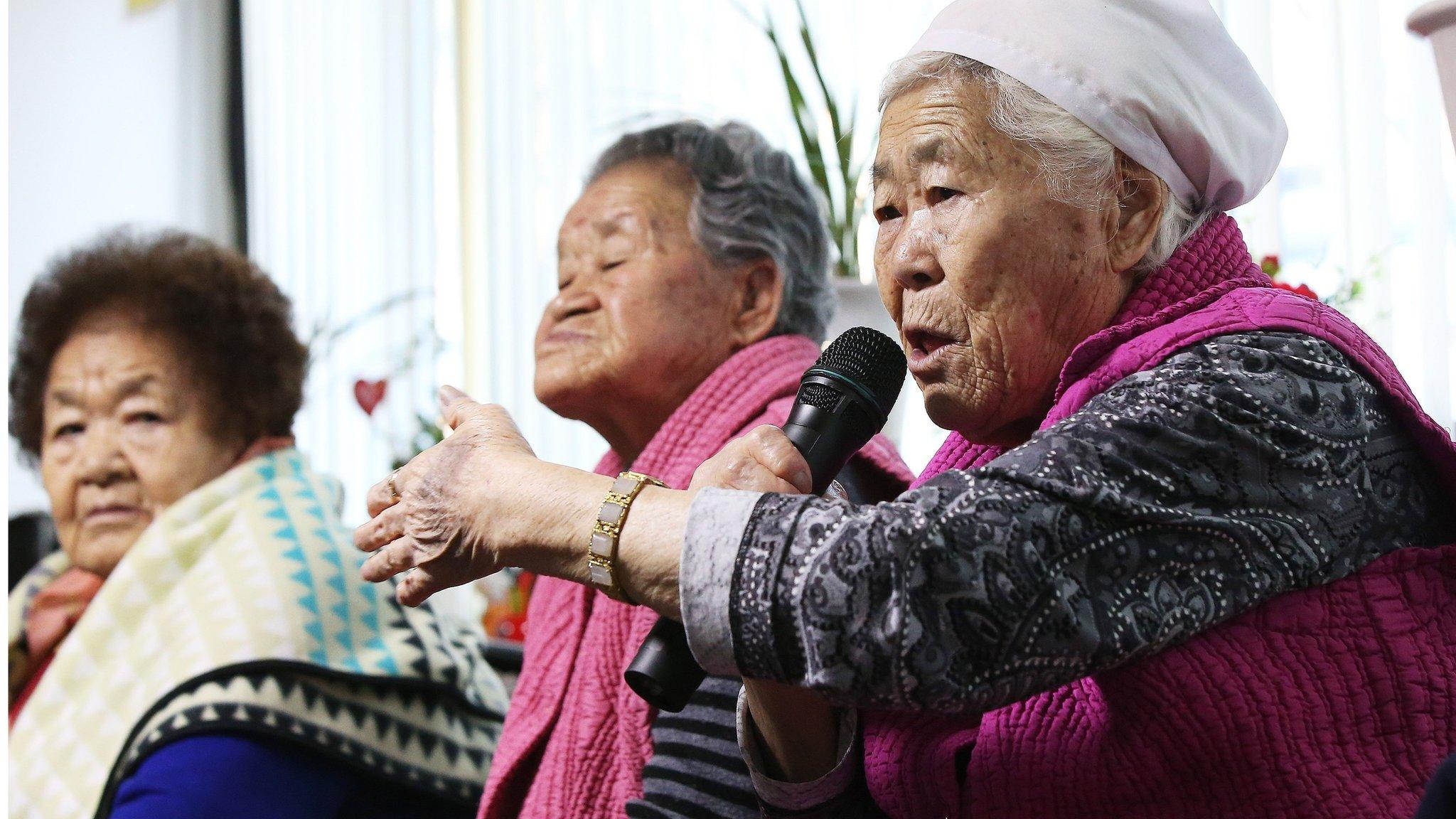The house where the Philippines' forgotten 'comfort women' were held
- Published
Sisters Lita and Mileng return to the Red House in Mapanique, Philippines
Hundreds of thousands of women and girls across Asia were raped and forced into sexual slavery by Japanese soldiers during World War Two. Some have been offered a direct apology and compensation from the Japanese government - but not in the Philippines. The last survivors there want their suffering to finally be acknowledged.
This article contains graphic details which some readers may find disturbing.
"At night there are evil spirits - my mother and brother used to see the ghost of an old woman." With this warning the caretaker unlocks the gates to the Red House.
"After the war, no one wanted to live here," he says. "They were too scared."
Today the majestic blood-red villa is crumbling, but memories of the atrocities committed inside it haven't faded.
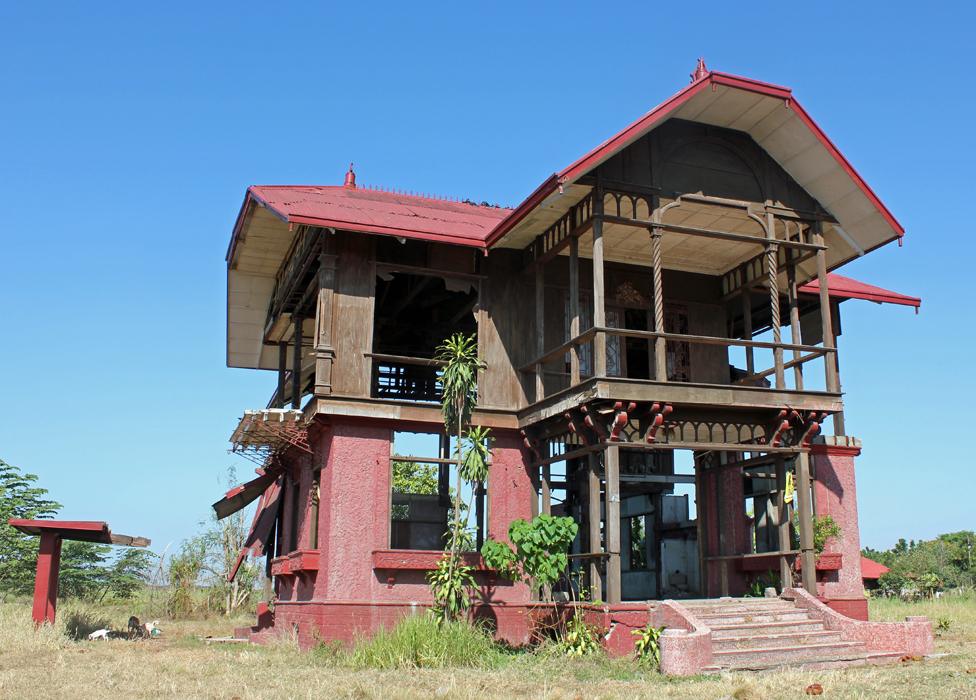
Many women and girls were assaulted by Japanese soldiers in the Red House
Lita and her sister Mileng live in the nearby village of Mapanique, about 50 miles north of the capital Manila. Now in their mid-80s, they recall a simple but happy childhood.
"We used to play hopscotch and tag. We'd climb trees and pick fruit," says Lita.
They were 13 and 15 years old when Japanese soldiers attacked their village in 1944.
Everyone was forced to watch as the men were executed, suspected of being resistance fighters, the sisters recall. One old man was castrated and forced to eat his own penis.
Mapanique was looted and razed. Then the girls and women, more than 100 in all, were forced to carry the looted goods to the Red House, which Japanese troops were using as a garrison.
"We thought it was the end of our world," says Mileng. "We thought they were going to kill us," adds Lita.
But the soldiers were in high spirits. They took off their uniforms, ate and had a smoke.
Then, as the light faded, they began to rape the women and girls.
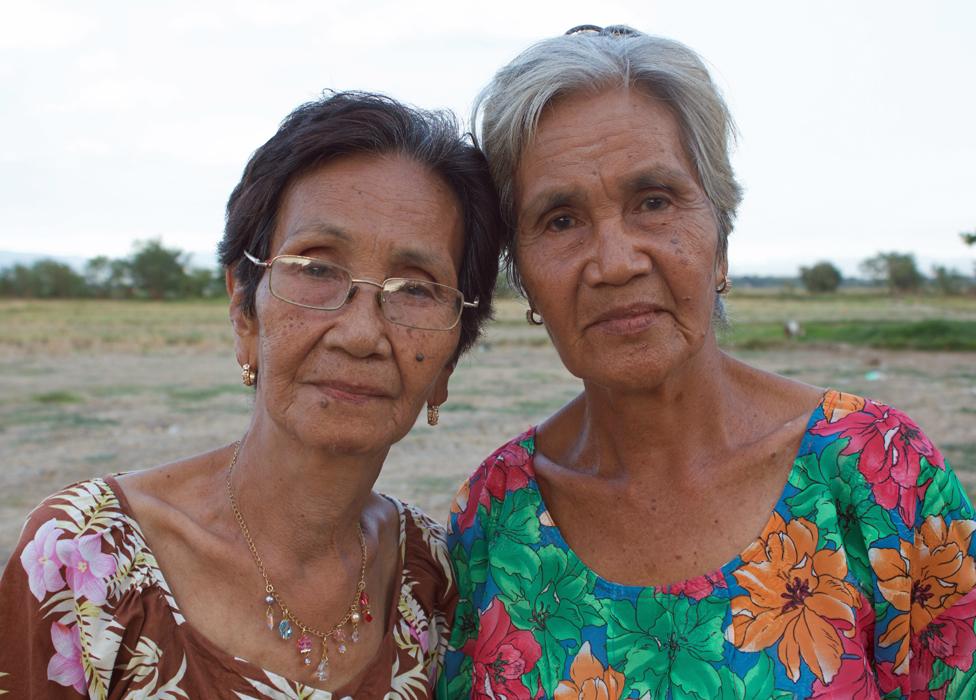
Sisters Lita (right) and Mileng were 13 and 15 years old when Japanese soldiers came to Mapanique
"It was so painful," says Mileng.
Inside the skeleton of the house, Lita points out where the stairway used to be. That's where they raped her.
"I was really struggling because I didn't want my clothes to be stripped off. I kept my legs together, tightly crossed. After I did that, they punched my thighs so that they could do what they wanted."
The following morning they were allowed to leave. Their village - including Lita and Mileng's home - had been burned down and survivors were taken along the river to a nearby town.
In the chaos and confusion, it took the sisters nearly three days to find each other.
They had become part of one of the largest operations of sexual violence in modern history. It's widely thought that about 200,000 women were held in captivity and many thousands more were raped.
Most were in Korea and China, but what's less well known is that the operation extended across the Japanese empire, as far afield as Burma, New Guinea, and the Philippines.
"This was not something done on the spur of the moment - this was planned," says historian Ricardo Jose of the University of the Philippines.
In the 1930s, it was discovered that Japanese troops in China would go on "raping sprees". Recognising the threat of the spread of sexually transmitted diseases, the Japanese Imperial Army devised a system to regulate sexual activity through the use of full-time slaves, who they called "comfort women".
Estellita - a frail and softly spoken 86-year-old great-grandmother - grew up on a prosperous sugar plantation in the central Philippines. She wanted to be a teacher.
One day, while selling food in the market, she was captured by a Japanese soldier and bundled into a truck.
She was taken to a garrison where she was repeatedly raped.
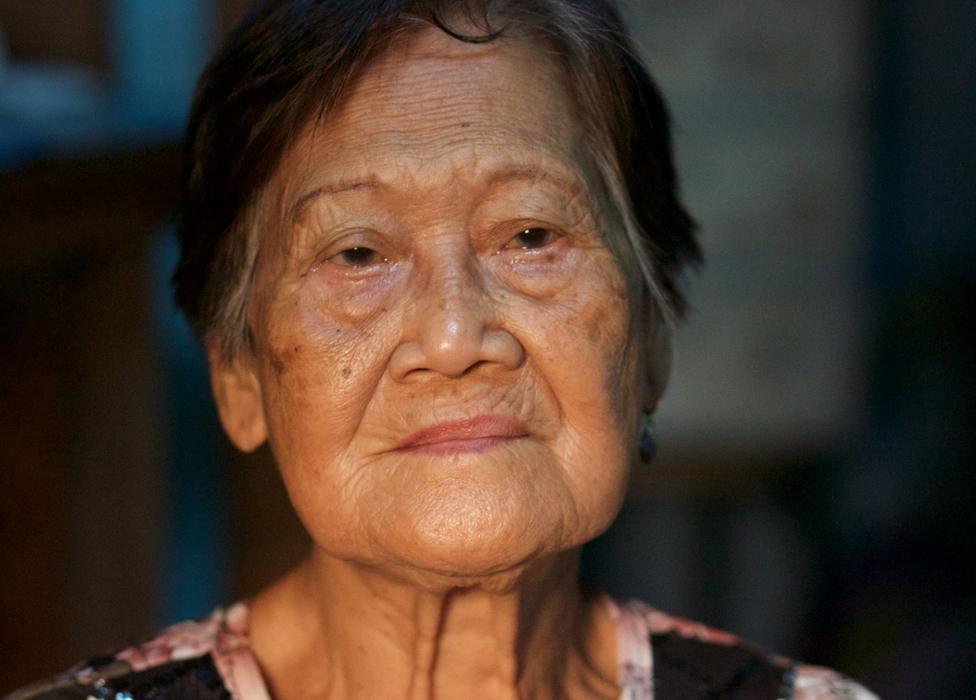
Estellita kept silent about what she endured for more than 50 years
"I don't remember how many men came in. At one point I felt a sudden pain so I fought back. The soldier got angry. He held my head and banged it really hard into the table and I lost consciousness."
Estellita was only 14. She spent almost three weeks in Japanese captivity.
Her account is factual rather than expressive. Seven decades on, she still doesn't want to show her pain. She has tried to forget the screams, the crying, the face of the armed guard who stood outside her door.
"It was living hell for the 'comfort women'," says Jose. "They simply had to stay in bed. They had to wait for the next customer, they had to submit. And this went on for hours, this went on for days, this went on for months. And they could not do anything."
The fragments of historical records that survived the war offer a chilling glimpse of the women's lives.
On fortnightly visits to one garrison in the city of Iloilo, Imperial Army doctors meticulously recorded the names, ages and sexual health of their captives: "21…16… 17… vaginal inflammation… vaginal erosion."
"At their most extreme, the acts of violence would involve not just rape, but using almost anything to penetrate the woman - bottles, sticks, blunt objects," says Jose.
"And of course it created scars for life. Sometimes the women were left for dead."
Estellita's captivity ended as suddenly as it began. She was awoken one morning by American soldiers. The Japanese had fled. She walked out of the garrison and home to her parents.
She briefly went back to school, trying to keep busy. But ultimately the burden of shame and the fear of friends and neighbours discovering what she had been through became too much.
She left school, giving up her ambitions of becoming a teacher, for a new life in poverty and anonymity in Manila.
Estellita began a half a century of silence - she didn't even share her story with her husband or children.
Former 'comfort woman' Estellita and her daughter Lisa discuss Estellita's ordeal
But when she started meeting up with other survivors and campaigning on behalf of the "comfort women", her daughter Lisa began to ask questions.
"I kept wondering why she wasn't around," says Lisa. "So I asked her."
Estellita was terrified of how her daughter would react.
"I had to explain that I didn't want it to happen to me," she says, conscious that other women in her position had been abandoned by their families when they found out.
Lisa was deeply moved by her mother's story. Now, she's joined her in the campaign for justice.
In 1993, after women in South Korea, the Philippines and other places started speaking out, the Japanese government offered "sincere apologies and remorse to all those, irrespective of place of origin, who suffered immeasurable pain and incurable physical and psychological wounds as comfort women".
At the time, it helped set up a fund to provide aid and support to victims but didn't offer full state-funded compensation. Japan has subsequently reiterated its sincere remorse and apologies towards the women.
But for many of the women these apologies were too vague and the financial offer inadequate.

Find out more
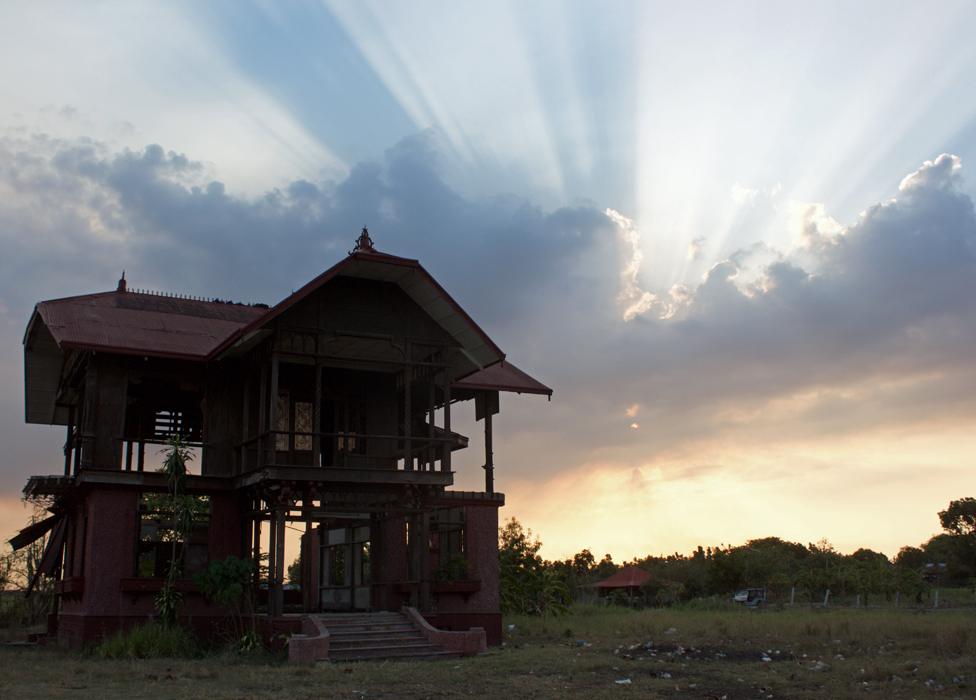
Our World: The Horrors of the Red House is on the BBC News Channel on 18 and 19 June at 21:30 GMT, and BBC World starting on 18 June (click here for transmission times)
Viewers in the UK can catch up on the BBC iPlayer

They have also questioned Japan's sincerity, pointing to recent statements from high-ranking Japanese politicians which challenge the veracity of the women's accounts. In February 2016, Deputy Foreign Minister Shinsuke Sugiyama told a UN Committee that Tokyo has no documentary evidence to confirm the forcible recruitment of women into sexual slavery during the war.
The women in the Philippines demand a full public apology that acknowledges explicitly the ordeal they went through and accepts legal responsibility, as well as compensation paid by the Japanese state.
In December last year, Tokyo did offer an official apology and promised compensation to South Korean survivors.
But towards the Filipina survivors, the Japanese government does not appear to be moving.
In a statement, it told the BBC: "Japan has repeatedly expressed the feelings of deep remorse and heartfelt apology for its actions during the war. We must never forget that there were women behind the battlefields whose honour and dignity were severely injured."
The women suspect that the close relationship between their own government and Japan - the largest donor and trading partner with the Philippines and a major strategic ally - is preventing Manila applying enough pressure.
In response, the Philippine government says it "has always remained sensitive to promoting the welfare of former Filipino comfort women," and that it "continues to adopt a firm and unwavering position on the matter".
This is not enough for Estellita, though. Her group are taking their campaign to the streets, joining a major political rally in downtown Manila.

Only around 70 women who were attacked by Japanese soldiers are still alive
Women unfurl their banners. The rally is deafening and chaotic. Estellita looks frail and drained but her face lights up.
"We won't stop until we get the justice we are calling for. And when we get that justice, it will feel like a burden has been lifted," she says.
Of the 1,000 Filipino women who were forced into sexual slavery only about 70 are still thought to be alive - and because of their age there is a sense of urgency.
Lita and Mileng have lived their whole lives in the shadow of the Red House.
The walls, floors and pillars that once supported the villa have been removed and the land put up for sale. The house is now so fragile it could be carried off in a storm.
"Whenever we pass by and see the house we are reminded of what the Japanese did to us," says Lita. "It was so painful but if the house is destroyed we will be sad, because it's part of the story of our lives. We want this house to be a reminder of our story."
Subscribe to the BBC News Magazine's email newsletter to get articles sent to your inbox.
- Published29 December 2015
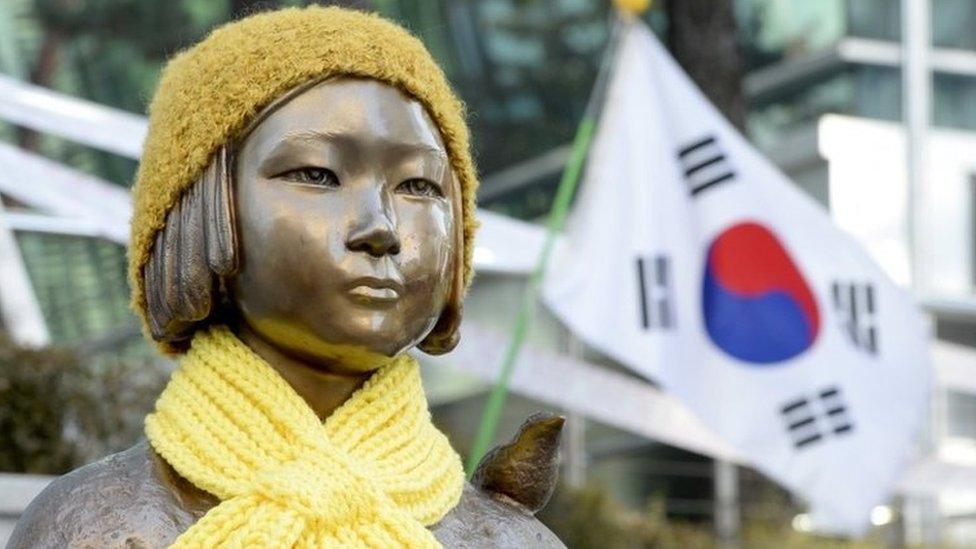
- Published28 December 2015

- Published28 December 2015
